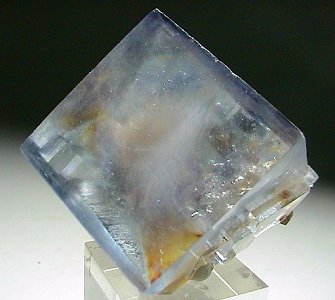As Jules Verne once wrote: "Look down well! You must take a lesson in abysses." In this case, those abysses may well reflect you.

After being compressed under artificial, near-planetary pressures – or "400,000 to 500,000 atmospheres" – "CO2 molecules react to these conditions by forming an irregular crystalline, or amorphous, structure with oxygen molecules. The resulting material is transparent, tough, and has an atomic structure resembling that of ordinary window glass."
Although amorphous carbonia "cannot [yet] exist outside of a pressure chamber," some scientists have already imagined using the material for "new, less environmentally harmful ways to dispose of CO2."
This could mean, for example, creating huge transparent cubes of carbon dioxide glass; these would then store excess CO2, locking it into perfect Euclidean forms, instead of letting more gas escape into the atmosphere where it would trap solar heat. The more cars and factories are put into operation anywhere in the world, pumping out yet more carbon dioxide, the larger these cubes will get, growing, reflective, looming on the edge of the city. Peripheral, abstract geometries of the purest architectural avant-garde.
Create enough and you could build whole cities with them.
Or, airlifted into the desert and buried there, future caves of glass will soon form, eroding from the surface down, abraded by sand-heavy winds. Years later, you'll take walking tours of the Glass Caverns of Utah, staying in towns such as New Carbonia – even Carbonia an der Oder, or Carbonia-on-Thames – where everything is made from weird glass blocks, and windows look out upon a faceted abyss of crystalline landscapes, cubed mazes of self-generating reflections where future backpackers of the world will re-discover existentialism, writing abstract poetry in old notebooks before being driven mad.
A confrontation with your double that never ends.
Meanwhile, the skies have cleared of all excess carbon dioxide, and these cubes around the world continue to grow...

(With a nod, of course, to J.G. Ballard; of similar concern: BLDGBLOG's A Natural History of Mirrors).
No comments:
Post a Comment